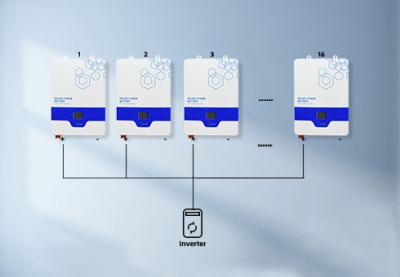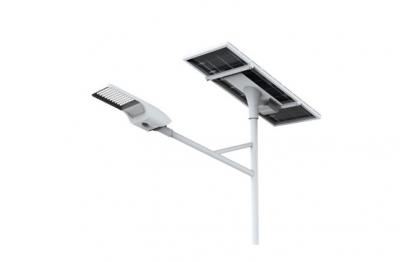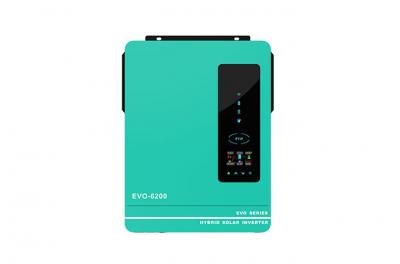
In a solar power system, the power battery is an essential part of the installation because it ensures uninterrupted power supply in case of a grid failure. In this article, we will break down the complex operation of these storage devices into several easy-to-understand processes. Our discussion will revolve around batteries that have been matched with solar systems, rather than standalone solar power panels that store power.
Battery storage in solar inverters works by storing excess energy generated by solar panels during the day for later use, such as at night or on cloudy days. The solar inverter converts the DC power from the solar panels into AC power for immediate use, while the excess energy is directed to the battery storage system. The inverter then manages the charging and discharging of the battery, ensuring that stored energy is released when needed. When the solar panels are not producing enough power, the inverter draws from the stored energy in the batteries to provide a continuous power supply. This setup enhances energy self-sufficiency, reduces reliance on the grid, and optimizes the use of renewable energy.
Battery storage in solar power systems refers to the process of storing excess energy generated by pv solar panels for later use. This stored energy is particularly valuable during times when solar panels aren't producing power, such as at night or on cloudy days. The battery ensures a continuous and reliable power supply, improving energy self-sufficiency and minimizing reliance on the electrical grid.
The primary role of solar power battery storage is to store excess solar energy for future use. This allows households or businesses to maximize the energy produced during sunny days, ensuring that stored electricity can be drawn upon during times of low solar output. Battery storage enhances the efficiency of solar power systems, reduces energy bills, and provides backup power during grid outages.
| Application Area | Description | Benefits |
|---|---|---|
| Renewable Energy | Storing energy generated from renewable sources like solar and wind. | - Balances supply and demand - Reduces reliance on fossil fuels - Enhances grid stability |
| Grid Stabilization | Helps in maintaining a stable and reliable electricity grid. | - Prevents blackouts - Manages peak loads - Improves power quality |
| Electric Vehicles | Provides power for electric cars, buses, and other vehicles. | - Reduces greenhouse gas emissions - Lowers fuel costs - Promotes sustainable transportation |
| Residential Use | Home energy storage systems for backup power and energy management. | - Ensures power during outages - Reduces electricity bills - Increases energy independence |
| Commercial Use | Energy storage solutions for businesses to manage energy costs and reliability. | - Lowers operational costs - Enhances energy efficiency - Provides backup power |
| Industrial Use | Large-scale energy storage for industrial applications and processes. | - Improves operational efficiency - Reduces energy costs - Supports uninterrupted operations |
| Telecommunications | Backup power for telecom towers and data centers. | - Ensures continuous operation - Reduces downtime - Enhances reliability |
| Off-Grid Solutions | Energy storage for remote areas without access to the main power grid. | - Provides reliable power - Supports sustainable development - Reduces dependency on diesel generators |
When sunlight hits the panels, visible light is converted into electric energy. Current flows into the battery and is stored as DC power. It is important to note that solar power panels come in two types: AC-coupled and DC-coupled. The latter has a built-in inverter that can convert the current into DC or AC. Thus, DC solar will flow from the panels to an external power inverter, which will convert it into AC power that can be used by your appliances or stored in an AC battery. The built-in inverter will convert AC power back to DC power for storage in this scenario.
In contrast to DC coupling systems, batteries have no built-in inverter. So, DC power from the solar power panels is routed into the battery via a charging controller. Unlike AC installations, the power inverter in this system only connects to your home wiring. Therefore, energy generated from the solar panel or battery will be converted from DC to AC before flowing to your appliances.
The energy flowing out from the battery panel of the solar energy equipment inverter will be prioritized for your home's power. Thus, electricity directly powers your appliances such as refrigerators, TVs, and lights. Typically, the energy generated by solar power panels will exceed your requirements. For instance, a lot of electricity may be produced on a hot afternoon, but your house may not consume much electricity. In this case, net metering occurs, where excess energy flows back into the grid. However, you can use this overflow to charge the battery.
The amount of energy stored in the battery depends on its charging rate. For example, if your home doesn't consume much electricity, the charging process will be fast. Additionally, if you connect to larger panels, a lot of energy will flow into your home, and the battery will charge faster. Once the battery is full, the charging controller will prevent it from overcharging.
If you're connected to the grid, there will always be a period when the transmission system fails or is shut down for maintenance. In this case, the system will isolate your house from the grid and activate the backup power. The battery will operate like a backup generator in such situations.
In this type of plan, you will be charged based on the amount of electricity you use and the time you use it. Energy obtained from the grid at night costs more than the excess energy produced during the day. Therefore, by storing excess energy and using it at night, you can reduce your overall electricity cost.


